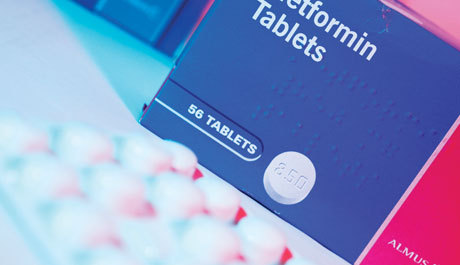GPs to be incentivised to refer patients to diabetes prevention programme

GPs are set to be incentivised to refer patients to NHS England’s diabetes prevention scheme under proposals from NICE, after Pulse revealed that patient participation in the scheme is below expected levels.
A new indicator recommended by NICE will reward GPs for the ’percentage of patients newly diagnosed with non-diabetic hyperglycaemia in the preceding 12 months who have been referred to a Healthier You: NHS Diabetes Prevention Programme for intensive lifestyle advice’.
This will only apply in areas where it has been rolled out, NICE said, and will only be suitable for a national scheme once the prevention programme has been fully rolled out.
It comes after Pulse revealed in April 2015 that there were moves to incentivise GPs to use the prevention programme.
However, Pulse also revealed earlier this year that only just over 7,000 of the 20,000 places for patients on the programme had been filled, despite GPs referring them.
NICE said they are recommending an incentive for GPs to promote lifestyle changes.
Its consultation document stated: ’People with an elevated HbA1c between 42-47 mmol/mol (fasting plasma glucose 5.5-6.9 mmol/l) are at increased risk developing type 2 diabetes. Progression may be prevented or delayed through lifestyle changes with a focus upon diet, weight and exercise.
’People are more likely to be successful if they receive intensive support to make these changes and NHS England has invested in an intensive lifestyle change programme targeted at people with non-diabetic hyperglycaemia.
’Roll-out of this programme has commenced in a small number of areas but should be available throughout England by 2020.’
This comes as new figures reveal GP prescriptions for diabetes have increased by 80% over the last ten years while total prescriptions increased by 46% over the same period.
The official figures from NHS Digital reveal that over the past year there was an almost 5% in diabetes prescriptions – which is more than double the 2% increase in total prescriptions.
Diabetes drugs now make up 11% of total primary care net ingredient costs and almost 5% of prescriptions.
The report ‘Prescribing for Diabetes: England 2006/07 to 2016/17’ uses latest prevalence figures available from the QOF.
It shows that GP prescriptions for diabetes between 2009/10 and 2015/16 have grown nearly twice as fast as the rise in diabetes prevalence across the population, with prescriptions for the most commonly used drug, metformin, rising by 51%.
What is the Diabetes Prevention Programme?
Under the national ‘Healthier You’ diabetes prevention programme GPs have been encouraged to target people who are at high risk of developing diabetes and refer them to intensive lifestyle programmes with activities like cookery and Zumba classes.
Launched in 2016 by NHS England and Public Health England, the scheme piloted at seven sites and rolled out to a further 20 sites this year, with a view to starting 20,000 at-risk people on the programme in 2016/17. Further expansion is planned to reach 100,000 people a year by 2020.
Official figures presented by Diabetes UK at their annual conference in May showed that by the end of January GPs had referred 25,687 at-risk individuals to the programme, against a target of 24,605.
But Pulse revealed later on in the month that referred patient participation in the programme is far lower, with only 7,232 of 20,000 places filled according to an evaluation of one of the precursor schemes by the National Institute of Health Research.
Visit Pulse Reference for details on 140 symptoms, including easily searchable symptoms and categories, offering you a free platform to check symptoms and receive potential diagnoses during consultations.



 Oviva’s fully remote Tier 3 Weight Management programme
Oviva’s fully remote Tier 3 Weight Management programme





